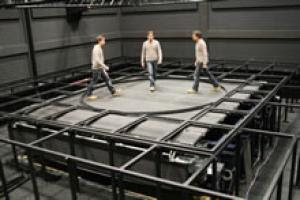Patients in therapy to overcome addictions have a new arena to test their coping skills--the virtual world. A new study by University of Houston Associate Professor Patrick Bordnick found that a virtual reality (VR) environment can provide the climate necessary to spark an alcohol craving so that patients can practice how to say "no" in a realistic and safe setting. Bordnick, of the UH Graduate College of Social Work, investigates VR as a tool for assessing and treating addictions. He studied 40 alcohol-dependent people who were not receiving treatment (32 men and eight women). Wearing a VR helmet, each was guided through 18 minutes of virtual social environments that included drinking. The participant's drink of choice was included in each scene. Using a game pad, each rated his or her cravings and attention to the alcohol details in each room. Each then was interviewed following the experience.
 His VR environments, developed with a company called Virtually Better, feature different scenarios that an addict may find challenging: a bar with imbibing patrons, a house party with guests drinking and smoking, a convenient store with cigarettes and alcoholic beverages within reach, a designated smoking section outside of a building or a room with an arguing couple. The environments use actors in each scene as opposed to computer-generated characters. In addition, the study added another layer of realism. A device sprayed the air with scents the participant may encounter in the various scenarios--cigarette smoke, alcoholic beverages, pizza or aromas associated with the outdoors.
His VR environments, developed with a company called Virtually Better, feature different scenarios that an addict may find challenging: a bar with imbibing patrons, a house party with guests drinking and smoking, a convenient store with cigarettes and alcoholic beverages within reach, a designated smoking section outside of a building or a room with an arguing couple. The environments use actors in each scene as opposed to computer-generated characters. In addition, the study added another layer of realism. A device sprayed the air with scents the participant may encounter in the various scenarios--cigarette smoke, alcoholic beverages, pizza or aromas associated with the outdoors.More information:
http://www.sciencedaily.com/releases/2008/04/080428175336.htm






